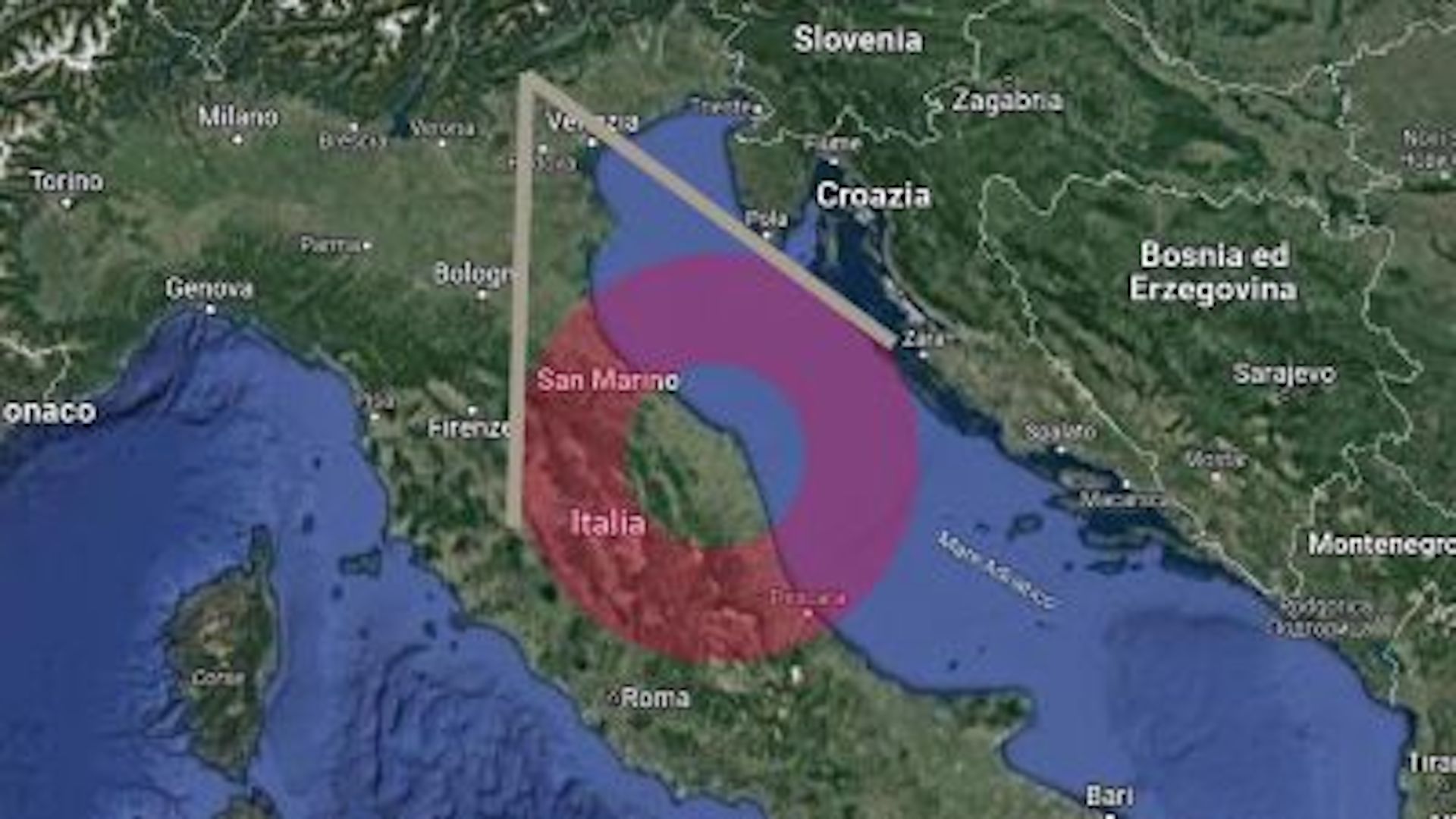Eerie ring of red light flashes like a massive UFO above Italy. What was it?
Spoiler alert: Not aliens.
An enormous, circular halo of eerie red light, which looks like something out of a sci-fi movie, recently flashed in the night sky above Italy. The bizarre disk appeared and disappeared within milliseconds, meaning most people likely missed the strange spectacle.
But one person, nature photographer Valter Binotto, managed to capture a shot of the luminous halo in the sky above the town of Possagno in northern Italy on March 27. However, the red ring was not actually located above the town. Instead, the massive circle, which was around 224 miles (360 kilometers) in diameter, blinked above central Italy and part of the Adriatic Sea. It was only a forced perspective that made the ring look as if it were hanging above the town.
The ring flash is known as an "emission of light and very low-frequency perturbations due to electromagnetic pulse sources," or ELVE for short, according to Spaceweather.com. ELVEs are a rare type of stratospheric/mesospheric perturbation resulting from intense thunderstorm electrification (SPRITE). The red rings are created when electromagnetic pulses (EMPs) given off by lightning hit Earth's ionosphere, the ionized part of the upper atmosphere that stretches between 50 and 400 miles (80 and 644 km) above the ground.
Related: UFOs and UAP: History, sightings and mysteries
Due to their short-lived nature, ELVEs are normally visible only to satellites orbiting Earth and were discovered just in 1990 thanks to cameras onboard NASA's space shuttles. Binotto's new image is likely "the best ever picture of one from the ground," according to Spaceweather.com.
Binotto believes that the ELVE was produced by an EMP generated from a large thunderstorm near Ancona, a city around 174 miles (280 km) southeast of Possagno. Normally, lightning bolts do not emit EMPs because they do not carry enough current. But during this storm, an unusually powerful bolt, at least 10 times more powerful than regular lightning bolts, likely generated the electrical shockwave, which then hit the ionosphere, according to Spaceweather.com. When electrons from within the EMP hit the ionosphere, the charged particles excite nitrogen atoms which then give off the reddish glow.
Binotto has photographed hundreds of ELVEs and other types of transient luminous events (TLEs) since he began shooting them in 2019, and this is "one of the biggest structures" he has ever seen, he told Spaceweather.com.
Breaking space news, the latest updates on rocket launches, skywatching events and more!
This is not the first time SPRITEs like this have been photographed from Earth. In February 2021, a red sprite in Hawaii was photographed alongside blue jets, which are lightning bolts that shoot upward instead of downward. And in April 2013, red sprites were photographed above multiple bolts of lightning in Nebraska.
This story was originally published on Live Science, a Space.com sister site.

Harry is a U.K.-based staff writer at Live Science. He studied Marine Biology at the University of Exeter (Penryn campus) and after graduating started his own blog site "Marine Madness," which he continues to run with other ocean enthusiasts. He is also interested in evolution, climate change, robots, space exploration, environmental conservation and anything that's been fossilized. When not at work he can be found watching sci-fi films, playing old Pokemon games or running (probably slower than he'd like).



